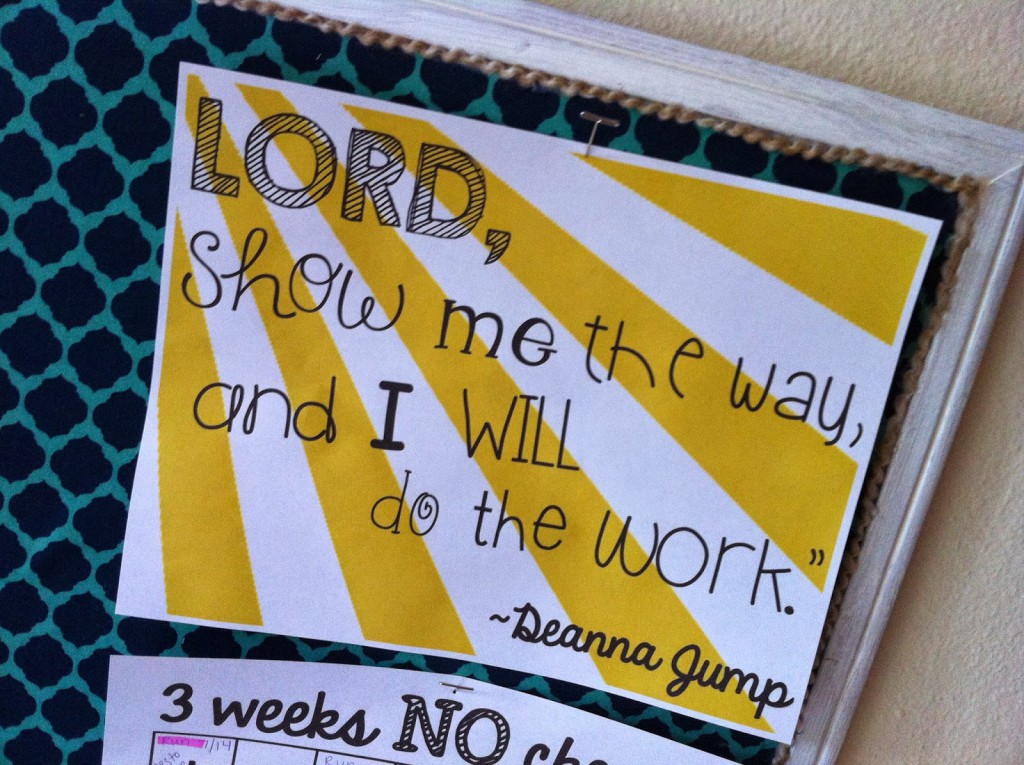So, we all know Deanna Jump. She is an inspiration to teachers everywhere! Not only did she start out on TPT wayyy before many of us, but she paved the way and showed us all how to be successful teacher-preneurs. I look up to her and wish that I could’ve met her in Vegas this year. {I will definitely be there next year!}
I’ve seen this quote floating around blogs and Instagram. Seriously, it made me tear up when I first read it. This quote explains everything we do as teachers and TPT sellers. I knew I had to print it out and hang it in my office, so I created this little freebie for my store. I hope you all enjoy it! Click the freebie link or the picture below to grab it!
My hope is that this is a daily reminder to you and your families. We will do the work, when He shows us the way.



I love, love, love this! He is the most important part of my TPT story. 🙂
Thank you for sharing
Thank you, Deanna, for always sharing your story and the truth behind it. 🙂 We love you and your work!
Meredith
I just love everything about this! I love Deanna Jump's powerful words and I love that you made them into such a cute freebie! I will definitely be downloading this and putting it up as a constant reminder of where my focus should always be. Thank you to both!